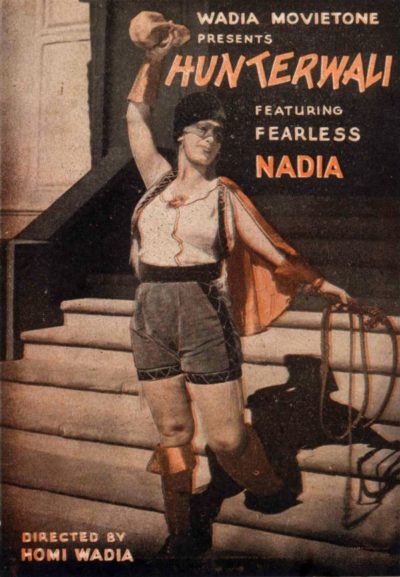
“She’s a woman in enemy territory. All women are in enemy territory for centuries, but in this case, this is particularly accentuated because the drug-dealing world is a very machista, hostile environment. Here, the survival of a woman in enemy territory is even more spectacular. That’s the original challenge of the novel — to ensure that in a machista, violent world, which is the territory of men — that in such a world where the women use the weapons of men, they use the intelligence and penetration of a woman. The challenge is for her to do more than what men do in those circumstances and for her to become the boss of men.”
— Arturo Pérez-Reverte
There have been two, significantly different televisual adaptations of Arturo Perez-Reverte’s novel, La Reina Del Sur (you can read our review of the source material here). The first, was a Mexican telenovela that ran for 63 episodes during 2011. However, this summer saw the premiere of an American television series based on the same novel, which played on the USA Network. This covered 13 episodes thus far, and finished its first run last month, with the network agreeing to a second season next year. Let’s take a look at both shows: their similarities, differences, strengths and weaknesses, starting with the Mexican version.
 La Reina Del Sur
La Reina Del Sur
★★★
“The reina in Spain, stays mainly in the plain.”
The impact of La Reina Del Sur probably can’t be exaggerated. Right from the first episode, screened in February 2011 on Telemundo, it was a smash hit. The premiere drew the network’s biggest ratings ever for a first episode, and perhaps surprisingly, the audience was almost equally split between men and women. The following week, viewers increased by almost 20%, and beat all English-language stations in the 18-34 demographic. The final episode, on May 30th, was the most-watched program in Telemundo’s 19-year history – and again, was watched by more men than any show on TV at the time. Though since surpassed, it was also the station’s most-expensive production, shot in five countries and budgeted at $10 million, So if you’re expecting cheesy drama, you’re going to be surprised – at least somewhat.
It tells the story of Teresa Mendoza, whose life is thrown upside down when her boyfriend, El Guero, is killed by the organized crime gang for which he has been flying planes. She trades his notebook to the head of the gang, Epifanio Vargas (Zurita), in exchange for her help escaping to Spain. There, she gets a job as a waitress in a brothel, and gradually works her way up to running the place’s books. She begins a relationship with a smuggler, and learns the ropes of the trade from him, only for tragedy to strike. While trying to out-run the authorities, their boat crashes into rocks, killing him and leading to her being sent to prison.
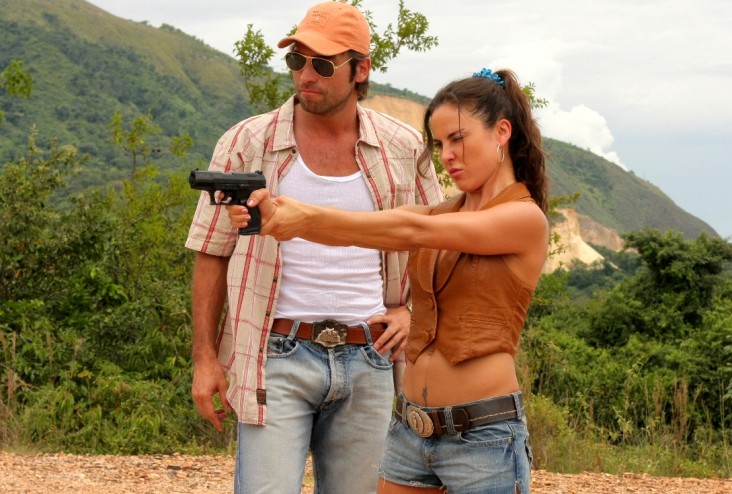 In jail, she links up with Colombian Patricia O’Farrell (Urgel), who knows the location of a huge cocaine stash, hidden by her late boyfriend from the Russian mafia. On their release, the pair work out a risky deal with Oleg Yasikov (Jiménez) to sell it back, giving them the cash to set up in the drug business, with Yasikov’s help. However, this attracts unwelcome attention from two fronts. The DEA start sniffing around, with the help of the local cops. Potentially more lethally, Epifanio is now on the political rise, and Teresa’s existence represents an unwelcome loose-end that must be tidied up. Not least because the DEA are interested in getting her back to Mexico to testify against him.
In jail, she links up with Colombian Patricia O’Farrell (Urgel), who knows the location of a huge cocaine stash, hidden by her late boyfriend from the Russian mafia. On their release, the pair work out a risky deal with Oleg Yasikov (Jiménez) to sell it back, giving them the cash to set up in the drug business, with Yasikov’s help. However, this attracts unwelcome attention from two fronts. The DEA start sniffing around, with the help of the local cops. Potentially more lethally, Epifanio is now on the political rise, and Teresa’s existence represents an unwelcome loose-end that must be tidied up. Not least because the DEA are interested in getting her back to Mexico to testify against him.
According to del Castillo, the entire series was shot in just seven months, which is an extremely quick pace: it works out at more than two episodes, or over an hour of new footage, every single week. At one point, the star required medical treatment for exhaustion. Arturo Pérez-Reverte, author of the source novel (whose work also inspired Roman Polanski’s The Ninth Gate), helped extend the material, a very necessary task given the 63 episodes the show lasted. Not having read the book myself, I can’t comment on what was added, but having read Werner’s scathing review, seems like the telenovela is superior to the novel, and has certainly made its heroine a more sympathetic character.
The two areas where it works best are Teresa Mendoza’s character arc, and the supporting cast. With the story unfolding over such a long period (by English-language TV standards), the former kinda creeps up on you. It’s only near the end, when the show includes a number of flashbacks to what Teresa used to be like, that you realize how drastically she has been changed by events. The plucky yet naive young woman to whom we were initially introduced has gone, replaced by a thoroughly hard-bitten woman, She learns the hard way that trust and affection are traits that can get you – or your loved ones – killed in her chosen profession. Frankly, the trail of dead bodies left behind Teresa in one way or another, is so high, her belief she may be cursed begins to seem credible.
 I also liked the background characters. O’Farrell is a hard-drinking, coke-snorting, flagrantly bisexual party girl, yet still vulnerable and insecure at her core. She’s played by Urgel, who looks like a supermodel version of Brienne of Tarth, taller than most of the men on the show [Per Google, she’s officially 5’7″, but as this pic of her, del Castillo and male star Ivan Sanchez shows… someone’s not telling the truth] Another woman Teresa meets in jail, who becomes a key part of her team is Marcela, known as “La Conejo” (the rabbit). She looks like she wouldn’t say boo to a goose, but actually poisoned her husband and his mother. Alberto Jiménez, as Yasikov, seems to be channeling Lee Van Cleef. Finally, DEA agent Willy Rangel, shows up early, vanishes in the middle, then comes back to be pivotal at the end, drinking coffee from his Union Jack mug. Given this show is a marathon, not a sprint, having these to sustain interest is likely a necessity.
I also liked the background characters. O’Farrell is a hard-drinking, coke-snorting, flagrantly bisexual party girl, yet still vulnerable and insecure at her core. She’s played by Urgel, who looks like a supermodel version of Brienne of Tarth, taller than most of the men on the show [Per Google, she’s officially 5’7″, but as this pic of her, del Castillo and male star Ivan Sanchez shows… someone’s not telling the truth] Another woman Teresa meets in jail, who becomes a key part of her team is Marcela, known as “La Conejo” (the rabbit). She looks like she wouldn’t say boo to a goose, but actually poisoned her husband and his mother. Alberto Jiménez, as Yasikov, seems to be channeling Lee Van Cleef. Finally, DEA agent Willy Rangel, shows up early, vanishes in the middle, then comes back to be pivotal at the end, drinking coffee from his Union Jack mug. Given this show is a marathon, not a sprint, having these to sustain interest is likely a necessity.
It is disappointingly low-key in terms of action: Teresa’s first boyfriend teaches her to shoot, as shown above. But after using it to escape early peril, she doesn’t fire another round until the final battle. To be honest, even the efforts at generating tension are only sporadically successful, and this is more drama-than thriller-inclined. There are some moments of plotting which don’t ring true either. Apparently, in Spain, police procedure means than when someone confesses to having hired a hitman, you then let them wander off upstairs on their own to, oh I dunno, tidy up or something. Such mis-steps are likely inevitable at some point though. All told, I found it acceptably entertaining, with a lot less time spent on torrid romance than I expected, and anchored by del Castillo’s sound performance.
Finally, in a bizarre element of life imitating art, Kate del Castillo subsequently became involved with notorious fugitive Mexican drug-lord El Chapo, after Tweeting about him in 2012. Turns out he was a fan of La Reina Del Sur, telling her, “That series that you made, I saw it and I loved it. I’ve seen it many times—you’re a great actress in it.” He authorized Kate to begin work on a film version of his life story, before his break-out from jail in July 2015. Subsequently, she traveled to Mexico, along with Sean Penn, to meet El Chapo, a trip which Penn later chronicled in a heavily-criticized article for Rolling Stone. The relationship brought del Castillo scrutiny by the Mexican government, including an investigation for involvement in money-laundering. As of July, this was still ongoing…
Star: Kate del Castillo, Cristina Urgel, Humberto Zurita, Alberto Jiménez
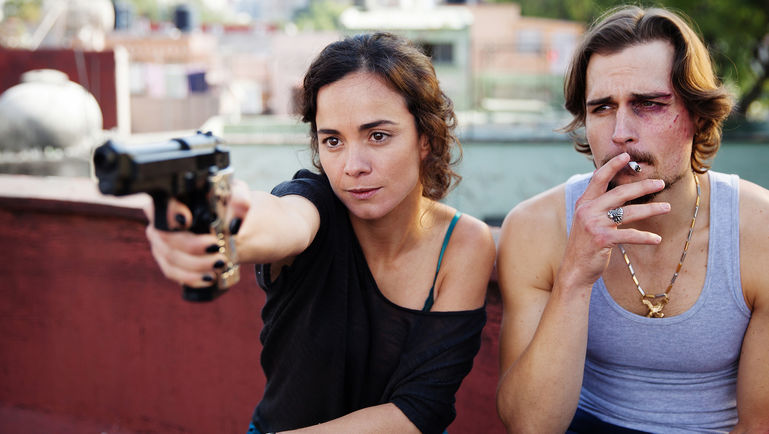 Queen of the South
Queen of the South
★★★★
“Don’t mess with Tex-Mexicans.”
 I’ll likely have less to say about the American version, because thus far, it has run barely 20% of the length of its predecessor, and tells far from a completed story. It is, however, radically different to this point in a number of ways. The most obvious is the shift in Teresa’s destination from Spain to the United States. This has caused some complaints among fans of the series and the novel, yet seems entirely understandable, given this is aimed squarely at the mainstream American market. While she’s still running from her boyfriend’s former employer, with a book containing a wealth of incriminating evidence, that information plays a more significant part here, becoming the McGuffin which drives the final third of the first season.
I’ll likely have less to say about the American version, because thus far, it has run barely 20% of the length of its predecessor, and tells far from a completed story. It is, however, radically different to this point in a number of ways. The most obvious is the shift in Teresa’s destination from Spain to the United States. This has caused some complaints among fans of the series and the novel, yet seems entirely understandable, given this is aimed squarely at the mainstream American market. While she’s still running from her boyfriend’s former employer, with a book containing a wealth of incriminating evidence, that information plays a more significant part here, becoming the McGuffin which drives the final third of the first season.
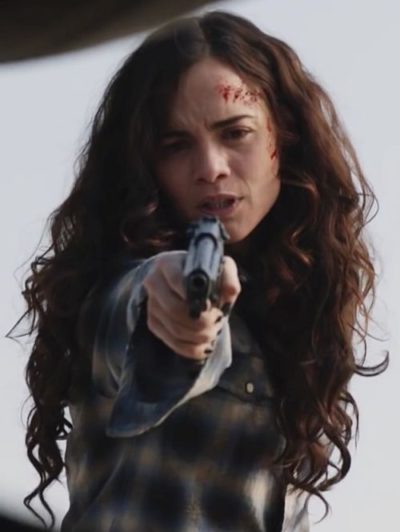 The other major difference is one of focus. Teresa (Braga) has, to this point, not risen very high at all up the ladder of the drug business. There’s some obvious foreshadowing that she will, in that her “spirit animal” is an impeccably-dressed version of herself. But that appears well off into the future. For now, the real “Queen of the South” so far is Camila Vargas (Falcon). She’s the separated wife of Epifanio Vargas (de Almeida), who runs the American side of the business. She seizes an opportunity presented by Epifanio’s political campaign, and is working on going into business entirely on her own, dealing directly with the Colombian cartels. Needless to say, this does not sit well with her former husband, and when she discovers he is also after Teresa – no more than a low-level runner in her Dallas, Texas organization – her interest is inevitably piqued.
The other major difference is one of focus. Teresa (Braga) has, to this point, not risen very high at all up the ladder of the drug business. There’s some obvious foreshadowing that she will, in that her “spirit animal” is an impeccably-dressed version of herself. But that appears well off into the future. For now, the real “Queen of the South” so far is Camila Vargas (Falcon). She’s the separated wife of Epifanio Vargas (de Almeida), who runs the American side of the business. She seizes an opportunity presented by Epifanio’s political campaign, and is working on going into business entirely on her own, dealing directly with the Colombian cartels. Needless to say, this does not sit well with her former husband, and when she discovers he is also after Teresa – no more than a low-level runner in her Dallas, Texas organization – her interest is inevitably piqued.
So far, it has not been at all interested in romance, unlike LRdS, where Teresa’s various boyfriends and entanglements were a significant part of the show. This may develop down the road: for now, US Teresa has been too busy trying to survive. Likely as a consequence, she has also directly slain more people than Mexi-Teresa at the same point. The first came as the result of a drug deal/heist gone bad, and you could make a good case for self-defense. The killings in the final episode, however? Not so much. I sense she’s going to be considerably more “hands on” than LRdS, where Teresa delegated all the dirty work to her minions [I may be wrong, but I don’t recall her killing anyone personally until the shoot-out in the final episodes]
Where Queen really scores, however, is in its production values. Despite the solidity of the performances, Reina always felt like a soap-opera: largely enclosed in its sets and constrained by a budget that, while unprecendented by telenovela standards, was still low by comparison to American TV. That isn’t the case here: at its best, this even goes beyond television and has a cinematic feel, comparable with the likes of Traffic or Sicario. I particularly liked the use of music, which was certainly a lot more appropriate than the jaunty Norteño awfulness which permeated LRdS. [I should point out, my tolerance for country & western is equally low!] The electronic beats used here instead, felt a bit reminiscent of Miami Vice, or perhaps Giorgio Moroder’s work for Scarface, both of which are certainly relevant.
It’s a grittier version of the drug life too. In LRdS, you largely felt one or more degrees of separation from the harsh realities involved, with the drugs almost an abstract construct. There’s no such escape here, right from the opening episode when a drug mule has the packages she’s carrying burst in her stomach, with fatal results. But the biggest ace the show has so far is Vargas – a character not present at all in Reina, and neither in the book as far as I can tell. She’s part chess player, part grim reaper, with a voice which sounds like honey being slowly poured over sopapillas. She’s a fascinating, complex creation, beautifully portrayed by Falcon, and we’d have happily watched an entire series focused entirely on her.
Certainly, it’ll be interesting to see where the story develops from here. The first season ended with Epifanio ascending to the governorship of Sinaloa, and immediately exercising his new-found power, calling in the military against the cartel his ex-wife had just taken from him. Meanwhile, Teresa suffers a heart-breaking personal loss, yet rises above it to tell Camila, “I don’t work for you any more.” And, to nobody’s great surprise, there was a shock final twist, revealing something which wasn’t all that much of a shock, Reina having prepped me for it (albeit, a lot later there than in episode #13). None of which diminished my interest in the next season, slated for summer 2017. While fans of the telenovela may choose to differ, I think any neutral would likely agree that this is a more polished and effective rendition of the story.
Star: Alice Braga, Veronica Falcon, Peter Gadiot, Joaquim de Almeida

 Professional wrestling is perhaps more international than you’d expect. While traditional territories – USA, Japan, Mexico and the UK – still remain the powerhouses, there is hardly a country in the world without its own local pro federation. But even I had not heard of Ecuador’s cholita luchadoras. Cholita is a term used for the native women there, usually found at the bottom of the social pyramid, both in terms of wealth and education. So the term translates as the “fighting cholitas“, who use pro wrestling as a way out of poverty, and to help them at least approach the average wage there, which is around $270 per month.
Professional wrestling is perhaps more international than you’d expect. While traditional territories – USA, Japan, Mexico and the UK – still remain the powerhouses, there is hardly a country in the world without its own local pro federation. But even I had not heard of Ecuador’s cholita luchadoras. Cholita is a term used for the native women there, usually found at the bottom of the social pyramid, both in terms of wealth and education. So the term translates as the “fighting cholitas“, who use pro wrestling as a way out of poverty, and to help them at least approach the average wage there, which is around $270 per month. That’s par for the course – as another example, Benita La Intocable (the Untouchable, one of the most high-flying of the cholitas) was training to be a nurse. Because the pay received is still peanuts by Western standards – typically no more than thirty dollars for their night’s work – but it’s an improvement on the very limited opportunities available to cholitas, typically as maid or other menial work. For until recently, the indigenous men and women had suffered a long history of discrimination, denied education, health care and public presence. The election in 2006 of the first Bolivian President from their group, Evo Morales, has helped address things, but there’s a reason the cholitas fight in El Alto, not the more prosperous La Paz.
That’s par for the course – as another example, Benita La Intocable (the Untouchable, one of the most high-flying of the cholitas) was training to be a nurse. Because the pay received is still peanuts by Western standards – typically no more than thirty dollars for their night’s work – but it’s an improvement on the very limited opportunities available to cholitas, typically as maid or other menial work. For until recently, the indigenous men and women had suffered a long history of discrimination, denied education, health care and public presence. The election in 2006 of the first Bolivian President from their group, Evo Morales, has helped address things, but there’s a reason the cholitas fight in El Alto, not the more prosperous La Paz. The most immediate difference any wrestling fan will notice, is the costumes. While in America, wrestlers typically wear a limited amount of tight-fitting clothing, intended not to interfere with their moves, the cholitas come to fight in the traditional native costumes, consisting of multiple layered skirts (typically five or six), and little bowler hats which perch on top of their long, braided hair. [Bonus fact: the angle of the hat indicates marital status] It seems implausible they would be able to do anything requiring significant movement, but you’d be surprised. Also worth noting: the women need particular endurance, due to the altitude. Bolivia’s capital, La Paz, is the highest in the world, and the nearby low-income suburb of El Alto, home of the cholitas, is more elevated still, at over 13,500 feet above sea-level. Simply breathing is hard work, that far up.
The most immediate difference any wrestling fan will notice, is the costumes. While in America, wrestlers typically wear a limited amount of tight-fitting clothing, intended not to interfere with their moves, the cholitas come to fight in the traditional native costumes, consisting of multiple layered skirts (typically five or six), and little bowler hats which perch on top of their long, braided hair. [Bonus fact: the angle of the hat indicates marital status] It seems implausible they would be able to do anything requiring significant movement, but you’d be surprised. Also worth noting: the women need particular endurance, due to the altitude. Bolivia’s capital, La Paz, is the highest in the world, and the nearby low-income suburb of El Alto, home of the cholitas, is more elevated still, at over 13,500 feet above sea-level. Simply breathing is hard work, that far up.




 Admittedly, Juliane Koepcke was not your average teenager. Indeed, she could hardly have been better prepared for her ordeal. Her family moved to a research station in the Peruvian rainforest when she was 14, so her father, zoologist Hans-Wilhelm Koepcke, could continue his work. Juliane was initially home-schooled, and the curriculum covered much more than the traditional three R’s.
Admittedly, Juliane Koepcke was not your average teenager. Indeed, she could hardly have been better prepared for her ordeal. Her family moved to a research station in the Peruvian rainforest when she was 14, so her father, zoologist Hans-Wilhelm Koepcke, could continue his work. Juliane was initially home-schooled, and the curriculum covered much more than the traditional three R’s.  The authorities hadn’t been able to locate the crash site, but with Juliane’s help, they found it, and her mother’s body was eventually recovered on January 12, more than three weeks later. The
The authorities hadn’t been able to locate the crash site, but with Juliane’s help, they found it, and her mother’s body was eventually recovered on January 12, more than three weeks later. The  Science-fiction writers largely whiffed on predicting the Internet: as a sweeping generalization, they were too busy with rocket ships and flying cars to see the biggest change in human society since the invention of the internal combustion engine. William Gibson’s “Sprawl” trilogy (Neuromancer, Count Zero and Mona Lisa Overdrive), which began in 1984, is a rare example which saw how the interconnectedness of people and things would become an everyday part of life, for better and worse. But one of the more accurate projections of our networked future was a Japanese manga series, first published in 1989: Masamune Shirow’s Ghost in the Shell, which has been powerfully influential since, from The Matrix through to HBO’s Westworld.
Science-fiction writers largely whiffed on predicting the Internet: as a sweeping generalization, they were too busy with rocket ships and flying cars to see the biggest change in human society since the invention of the internal combustion engine. William Gibson’s “Sprawl” trilogy (Neuromancer, Count Zero and Mona Lisa Overdrive), which began in 1984, is a rare example which saw how the interconnectedness of people and things would become an everyday part of life, for better and worse. But one of the more accurate projections of our networked future was a Japanese manga series, first published in 1989: Masamune Shirow’s Ghost in the Shell, which has been powerfully influential since, from The Matrix through to HBO’s Westworld. 
 The 1995 movie of Ghost in the Shell is not the first large-budget attempt at putting the “cyberpunk” world on the big screen. It was beaten to the punch, by a few months, by Johnny Mnemonic, an adaptation of a William Gibson short story, starring Keanu Reeves. The less said about it, probably the better, though coincidentally, Takeshi Kitano is in both it and the live-action Ghost. I’ll just leave you this sentence from another review: “After Henry Rollins is crucified by a fundamentalist Christian assassin played by Dolph Lundgren whose catchphrase is “Jesus time!” (AWESOME), Keanu and his sidekick Jane eventually hook up with the Lo-Teks, a gang of outlaws in the ruins of Newark led by Ice T and a cybernetic dolphin.” Yeah, Unsurprisingly, it was a critical flop then, and hasn’t exactly improved with age.
The 1995 movie of Ghost in the Shell is not the first large-budget attempt at putting the “cyberpunk” world on the big screen. It was beaten to the punch, by a few months, by Johnny Mnemonic, an adaptation of a William Gibson short story, starring Keanu Reeves. The less said about it, probably the better, though coincidentally, Takeshi Kitano is in both it and the live-action Ghost. I’ll just leave you this sentence from another review: “After Henry Rollins is crucified by a fundamentalist Christian assassin played by Dolph Lundgren whose catchphrase is “Jesus time!” (AWESOME), Keanu and his sidekick Jane eventually hook up with the Lo-Teks, a gang of outlaws in the ruins of Newark led by Ice T and a cybernetic dolphin.” Yeah, Unsurprisingly, it was a critical flop then, and hasn’t exactly improved with age.
























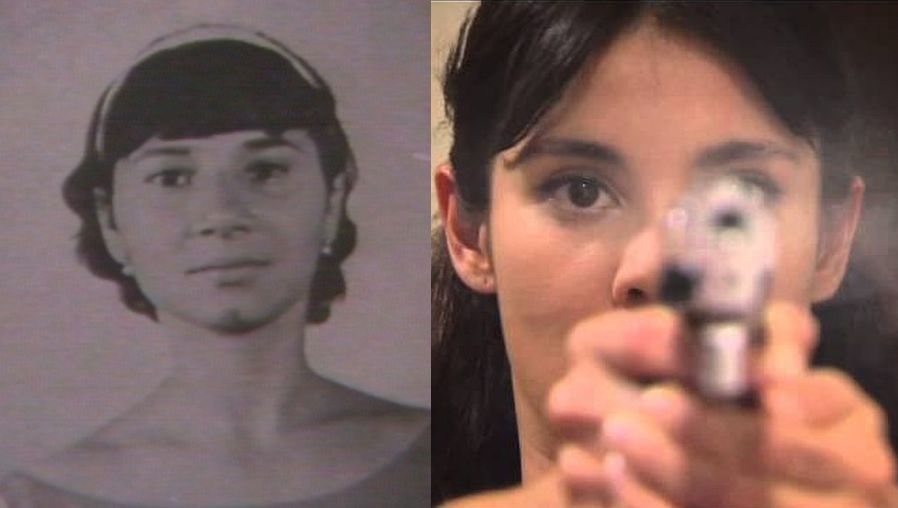 The young Griselda Blanco: real (left) and telenovela versions.
The young Griselda Blanco: real (left) and telenovela versions.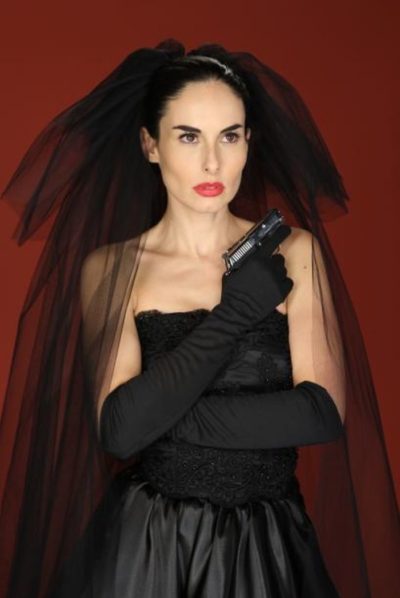 A focus of the early episodes sees Blanco joining a gang, which then kidnaps the scion of a rich local family. In the telenovela, this kick-starts her career, because the victim dies, and his father vows vengeance on Griselda, forcing her to go on the run as a young adult. The reality is perhaps even more astonishing, with her former lover, Charles Cosby, reporting that the kidnap and murder took place when Blanco was only eleven years old. After the boy’s parents refused to pay up, the frustrated gang gave her a revolver and challenged her to shoot him in the head. Challenge accepted…
A focus of the early episodes sees Blanco joining a gang, which then kidnaps the scion of a rich local family. In the telenovela, this kick-starts her career, because the victim dies, and his father vows vengeance on Griselda, forcing her to go on the run as a young adult. The reality is perhaps even more astonishing, with her former lover, Charles Cosby, reporting that the kidnap and murder took place when Blanco was only eleven years old. After the boy’s parents refused to pay up, the frustrated gang gave her a revolver and challenged her to shoot him in the head. Challenge accepted… So, jail on both sides. But this is where the stories really start to diverge. In reality, she served 13 years in New York for cocaine smuggling, then was shipped to Florida where worse trouble awaited. For hitman ‘Rivi’ had turned stool-pigeon, and with his testimony linking her to literally dozens of murders, the death penalty loomed large. However, his testimony was largely discredited after a
So, jail on both sides. But this is where the stories really start to diverge. In reality, she served 13 years in New York for cocaine smuggling, then was shipped to Florida where worse trouble awaited. For hitman ‘Rivi’ had turned stool-pigeon, and with his testimony linking her to literally dozens of murders, the death penalty loomed large. However, his testimony was largely discredited after a 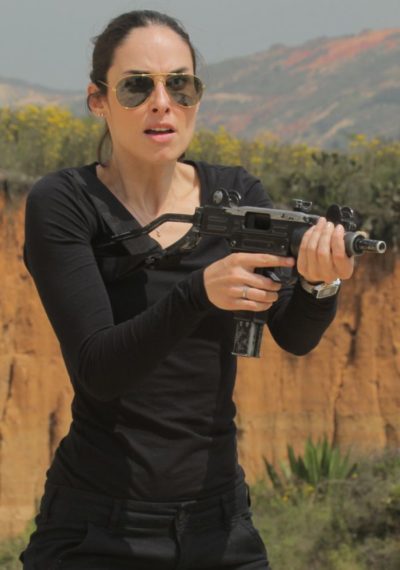 Certainly, there’s major dramatic license in Blanco’s departure from prison. Rather than just reaching the end of her sentence, there’s a dramatic escape from literally being in the electric chair [which is odd, since no-one has been executed in New York state since 1963, and no woman since Martha Jule Beck in 1951]. Using a drug which gives the impression of death, allows her gang to break her out by ambulance (Episode 44). From there she returns to Colombia, and only at this point, does Blanco cross paths with the most notorious drug-lord of them all, Pablo Escovar. However, it appears they knew each other far longer. Some sources
Certainly, there’s major dramatic license in Blanco’s departure from prison. Rather than just reaching the end of her sentence, there’s a dramatic escape from literally being in the electric chair [which is odd, since no-one has been executed in New York state since 1963, and no woman since Martha Jule Beck in 1951]. Using a drug which gives the impression of death, allows her gang to break her out by ambulance (Episode 44). From there she returns to Colombia, and only at this point, does Blanco cross paths with the most notorious drug-lord of them all, Pablo Escovar. However, it appears they knew each other far longer. Some sources 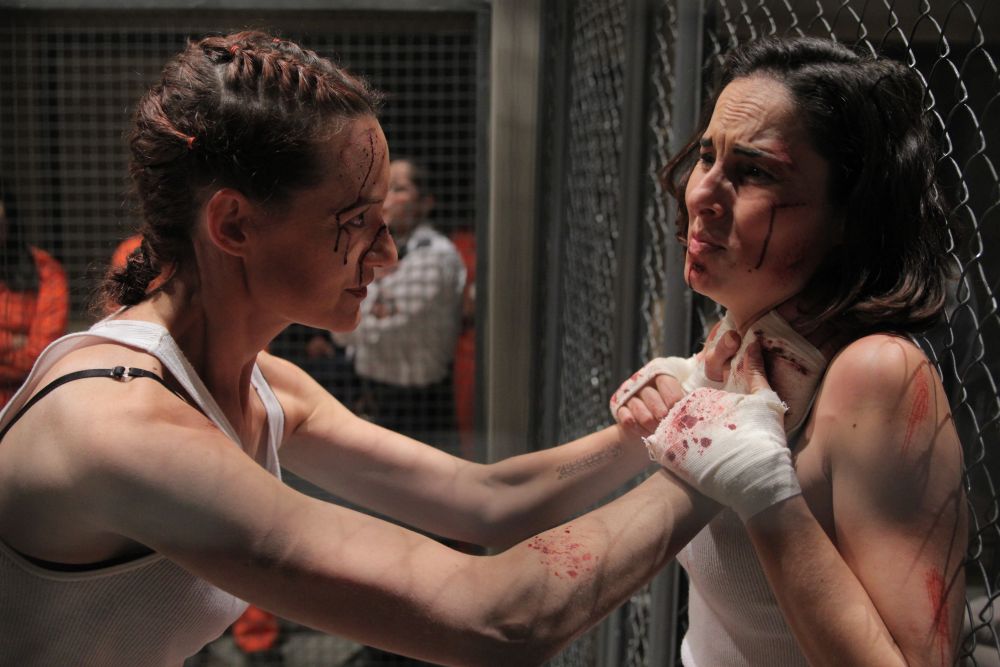 But it’s at the end the story diverts furthest from reality. Instead of having Griselda gunned down in the street by an unknown adversary, she and her longest lasting and most faithful ally, Richi (Román), are trapped in a cold-storage room. Rather than surrender, or be captured by their enemies, legal or otherwise, they agree to a mutual suicide pact. The screen goes black, we hear the sound of gunfire, and the series ends. But mere mortality is no match for the demands of audience ratings. And so, two years later, the show began its second season, with a further 63 episodes detailing the further adventures of Griselda Blanco. The fictional version of the character appears to be even harder to kill than her real-life inspiration.
But it’s at the end the story diverts furthest from reality. Instead of having Griselda gunned down in the street by an unknown adversary, she and her longest lasting and most faithful ally, Richi (Román), are trapped in a cold-storage room. Rather than surrender, or be captured by their enemies, legal or otherwise, they agree to a mutual suicide pact. The screen goes black, we hear the sound of gunfire, and the series ends. But mere mortality is no match for the demands of audience ratings. And so, two years later, the show began its second season, with a further 63 episodes detailing the further adventures of Griselda Blanco. The fictional version of the character appears to be even harder to kill than her real-life inspiration.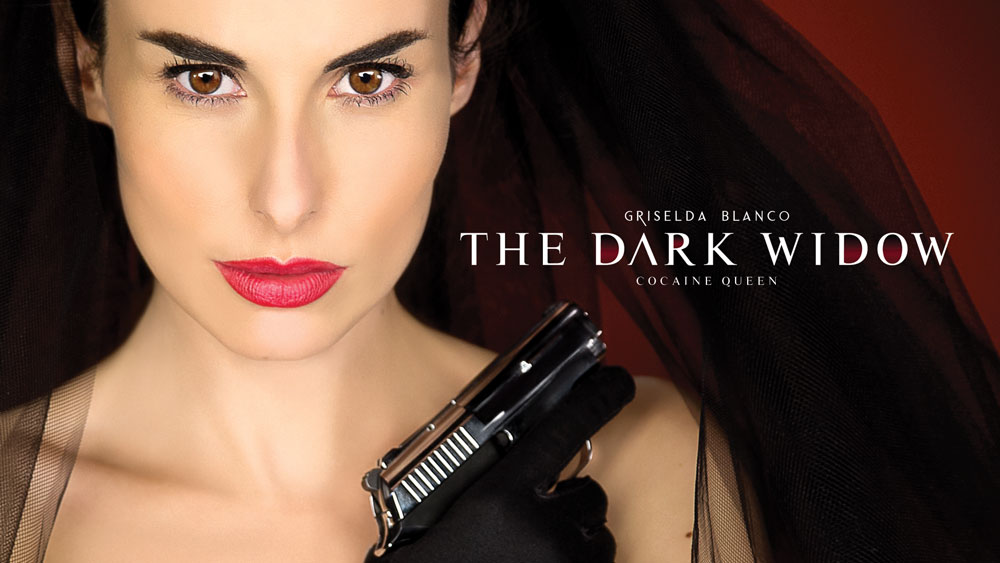

























 Resident Evil (2002)
Resident Evil (2002) Resident Evil: Apocalypse (2004)
Resident Evil: Apocalypse (2004) Resident Evil: Extinction (2007)
Resident Evil: Extinction (2007) Resident Evil: Afterlife (2010)
Resident Evil: Afterlife (2010) Resident Evil: Retribution (2012)
Resident Evil: Retribution (2012) It’s always interesting to look back at the previous year’s preview, and see what happened – which films came out that didn’t live up to expectations? And which ones went above and beyond? Looking at the 2016 list, the films being anticipated included Pride and Prejudice and Zombies, The Huntsman: Winter’s War and Ghostbusters. Bit of a mixed bag there, shall we say, and let’s leave it at that! But 2017 looks to be opening brightly, at least, with a first month which gives us the latest entries in two of the longest running action heroine franchises: Underworld and Resident Evil. Let’s take a look at those, and the other potentially interesting movies for the year ahead. Release dates are for North America and are entirely subject to change at the whim of those involved.
It’s always interesting to look back at the previous year’s preview, and see what happened – which films came out that didn’t live up to expectations? And which ones went above and beyond? Looking at the 2016 list, the films being anticipated included Pride and Prejudice and Zombies, The Huntsman: Winter’s War and Ghostbusters. Bit of a mixed bag there, shall we say, and let’s leave it at that! But 2017 looks to be opening brightly, at least, with a first month which gives us the latest entries in two of the longest running action heroine franchises: Underworld and Resident Evil. Let’s take a look at those, and the other potentially interesting movies for the year ahead. Release dates are for North America and are entirely subject to change at the whim of those involved.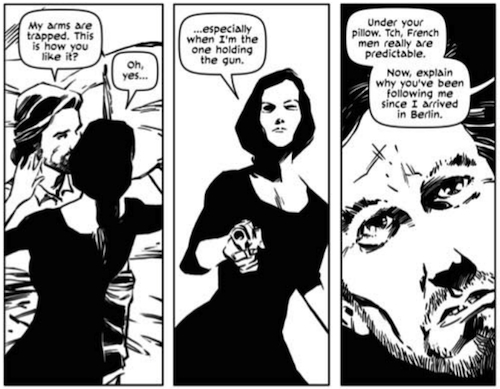 The Coldest City (July 28)
The Coldest City (July 28)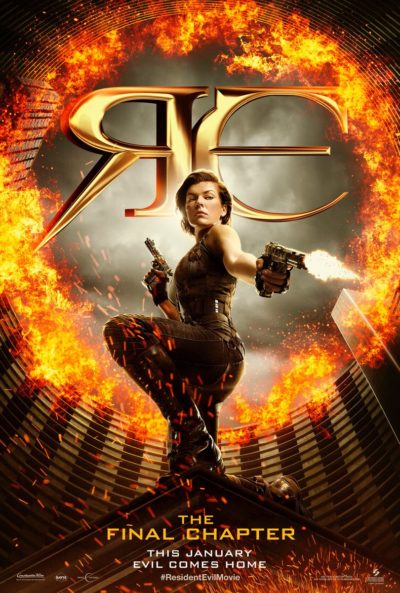 Resident Evil: The Final Chapter (January 27)
Resident Evil: The Final Chapter (January 27)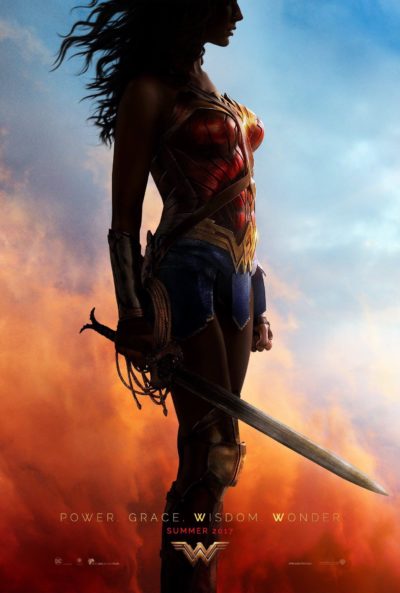 Luc Besson will always have a place in our hearts: he gave us Milla Jovovich and Natalie Portman. This seems closest to The Fifth Element, depicting a massive, sprawling futuristic universe. Per the official synopsis, “Valerian and Laureline embark on a mission to the breathtaking intergalactic city of Alpha, an ever-expanding metropolis comprised of thousands of different species from all four corners of the universe. Alpha’s seventeen million inhabitants have converged over time, uniting their talents, technology and resources for the betterment of all. Unfortunately, not everyone on Alpha shares in these same objectives.”
Luc Besson will always have a place in our hearts: he gave us Milla Jovovich and Natalie Portman. This seems closest to The Fifth Element, depicting a massive, sprawling futuristic universe. Per the official synopsis, “Valerian and Laureline embark on a mission to the breathtaking intergalactic city of Alpha, an ever-expanding metropolis comprised of thousands of different species from all four corners of the universe. Alpha’s seventeen million inhabitants have converged over time, uniting their talents, technology and resources for the betterment of all. Unfortunately, not everyone on Alpha shares in these same objectives.”










 I have reviewed this previously, way back at the birth of the site, as part of the
I have reviewed this previously, way back at the birth of the site, as part of the  Even before the original film was released, the studio was spurred into making a swift follow-up, and the rush into production shows itself in a plot more than somewhat similar to its predecessor. Koryu Lee (Shiomi) looks for Birei, a friend from high-school, at the request of Birei’s father, after she vanishes from Hong Kong. She tracks Birei down in Japan where the girl is being used as a mule by a diamond-smuggling gang, operating under the front of a company owned by Kazunari Osone (Murota). They don’t take kindly to Koryu’s investigation, and send a range of thugs to stop her, which only encourages Koryu, naturally. However, turns out there’s a more personal connection, since her sister Bykuran (Mitsukawa) is working for Osone – both on her feet and her back, if you know what I mean…
Even before the original film was released, the studio was spurred into making a swift follow-up, and the rush into production shows itself in a plot more than somewhat similar to its predecessor. Koryu Lee (Shiomi) looks for Birei, a friend from high-school, at the request of Birei’s father, after she vanishes from Hong Kong. She tracks Birei down in Japan where the girl is being used as a mule by a diamond-smuggling gang, operating under the front of a company owned by Kazunari Osone (Murota). They don’t take kindly to Koryu’s investigation, and send a range of thugs to stop her, which only encourages Koryu, naturally. However, turns out there’s a more personal connection, since her sister Bykuran (Mitsukawa) is working for Osone – both on her feet and her back, if you know what I mean… The third in the series is something of a return to form, not least because Yamaguchi goes back to holding the damn camera steady. But, really: another friend/relative has vanished into the clutches of a yakuza smuggling ring? At this point, it’s going beyond the realms of coincidence and, as Oscar Wilde (somewhat) said, now looks like carelessness. In this case, it’s cousin Shurei, though it’s not entirely clear if she is the cousin of Koryu (Shihomi) or the detective who gives our heroine her mission. The details are largely irrelevant, however. For what matters is that Koryu has not yet touched dry land after her arrival in Yokohama, accompanied by Shurei’s adorable little daughter Rika, when she is ambushed on the pier.
The third in the series is something of a return to form, not least because Yamaguchi goes back to holding the damn camera steady. But, really: another friend/relative has vanished into the clutches of a yakuza smuggling ring? At this point, it’s going beyond the realms of coincidence and, as Oscar Wilde (somewhat) said, now looks like carelessness. In this case, it’s cousin Shurei, though it’s not entirely clear if she is the cousin of Koryu (Shihomi) or the detective who gives our heroine her mission. The details are largely irrelevant, however. For what matters is that Koryu has not yet touched dry land after her arrival in Yokohama, accompanied by Shurei’s adorable little daughter Rika, when she is ambushed on the pier.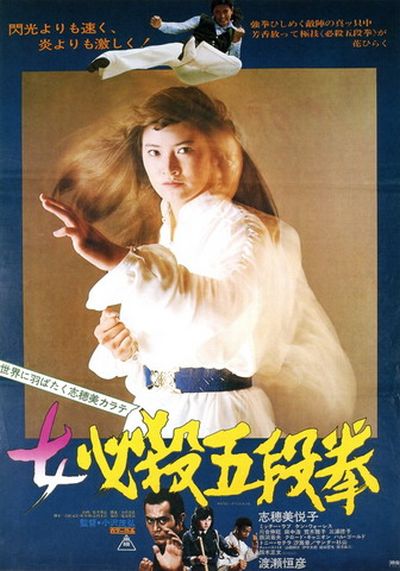 The fourth entry marked several changes, although given it was also the final one, that suggests these were not considered too successful. A new director was brought in; Ozawa is best known for The Streetfighte
The fourth entry marked several changes, although given it was also the final one, that suggests these were not considered too successful. A new director was brought in; Ozawa is best known for The Streetfighte




 The other major difference is one of focus. Teresa (Braga) has, to this point, not risen very high at all up the ladder of the drug business. There’s some obvious foreshadowing that she will, in that her “spirit animal” is an impeccably-dressed version of herself. But that appears well off into the future. For now, the real “Queen of the South” so far is Camila Vargas (Falcon). She’s the separated wife of Epifanio Vargas (de Almeida), who runs the American side of the business. She seizes an opportunity presented by Epifanio’s political campaign, and is working on going into business entirely on her own, dealing directly with the Colombian cartels. Needless to say, this does not sit well with her former husband, and when she discovers he is also after Teresa – no more than a low-level runner in her Dallas, Texas organization – her interest is inevitably piqued.
The other major difference is one of focus. Teresa (Braga) has, to this point, not risen very high at all up the ladder of the drug business. There’s some obvious foreshadowing that she will, in that her “spirit animal” is an impeccably-dressed version of herself. But that appears well off into the future. For now, the real “Queen of the South” so far is Camila Vargas (Falcon). She’s the separated wife of Epifanio Vargas (de Almeida), who runs the American side of the business. She seizes an opportunity presented by Epifanio’s political campaign, and is working on going into business entirely on her own, dealing directly with the Colombian cartels. Needless to say, this does not sit well with her former husband, and when she discovers he is also after Teresa – no more than a low-level runner in her Dallas, Texas organization – her interest is inevitably piqued.

